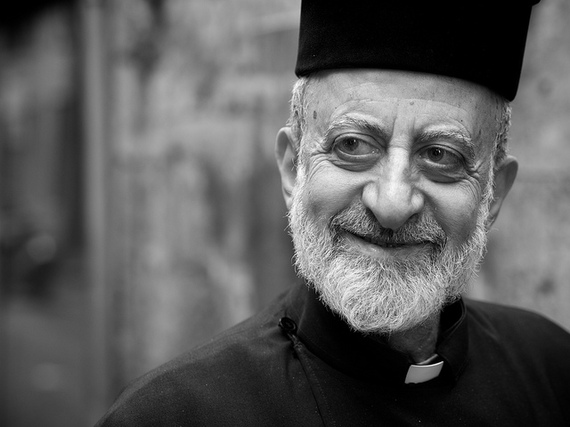The wages of battling sin are getting better for men and women of the cloth.
Non-Catholic clergy have experienced significant increases in income even as their work weeks declined by more than 15 percent in recent decades, according to a major new study of clergy compensation.
Overall, in inflation-adjusted wages, non-Catholic clergy made $4.37 more per hour in 2013 than they did in 1983. That figure is more than double the wage increase of the average worker with a college degree.
Like most everyone else in this age of increasing economic inequality, clergy are continuing to fall financially behind other elite professions such as doctors, lawyers and hedge fund managers, the study found.
But the price of their calling is declining along with the wage gap that separates them from other college-educated Americans, according to the study following Current Population Survey data from 1976 to 2013.
Just how much? The study found clergy are gaining ground financially faster than more than nine in 10 Americans with college degrees.
The study is believed to be the first to address what had been a particular difficulty in comparing wages of clergy by taking into account the benefits they receive in the form of housing allowances or living in church-provided residences.
Not everyone is better off.
There are vast differences in the situations of individual clergy, from those serving small rural or urban churches who often work for low wages without benefits to the high-end salaries of some prominent megachurch pastors. Catholic priests are by far on the low end of the scale, earning about half as much as other clergy.
But the overall picture for clergy is generally one of improvement in both wages and working conditions, suggests the study by sociologists Cyrus Schleifer of the University of Oklahoma and Mark Chaves of Duke University.
Here are five major trends lifted up in the study published in the current issue of the Journal for the Scientific Study of Religion:
More financial blessings: The 35 highest-income occupations in the U.S., from investment bankers to physicians to engineers, are running away from everyone else. But excluding those professions, the income gap between clergy and other college-educated Americans is shrinking.
An analysis of Current Population data from 1983 to 2002 - a period where occupational codes allowed more direct comparisons - showed that non-Catholic clergy earned 32 percent less than other Americans with college degrees, excluding the top 35 professions. By 2002, the gap decreased to 26 percent.
Wages rose at an even higher rate. The $4.37 per hour boost in pay for non-Catholic clergy more than doubled the slightly more than $2 an hour increase for other working Americans with a college degree.
The clergy wage disadvantage dropped from about $12 less per hour in 1983 to about $9 less per hour in 2013.
"It seems likely that the implementation of denominational minimum salaries, the trend toward housing allowances rather than manses, and improved benefits packages all have contributed to improved clergy compensation in recent decades," the researchers noted.
Greater work-family balance: A time-use study in 1934 found clergy put in a 76-hour work week. The work week of modern clergy declined from 52 hours per week in 1979 to 43 hours a week in 2013, the study of Current Population data found.
That is now nearly the same as the average 41-hour work week for other workers of similar education, according to the study.
The decline may be attributable in part to the fact Americans are spending less time in church - it is rare today to have Sunday evening or midweek services requiring separate sermons.
There also is an increasing recognition by clergy and their employers of the need to have a healthy balance between work and home, just as is happening in the larger society.
"They (clergy) are not motivated by money, but they are motivated to take care of their family," sociologist Cynthia Woolever, co-author of "Leadership That Fits Your Church," said in an interview.
A place of their own: Living in a parsonage next to the church used to be the norm.
As recently as 1976, 61 percent of clergy lived in church housing. By 2013, just 14 percent lived in church housing.
Having their own home away from the church not only helps preserve the privacy of ministers and their families, but is a financial asset with great potential for building equity.
The pulpit wage penalty: Clergy working as chaplains, teachers or administrators or in other nonchurch settings make 19 percent more than their peers working in congregations, the study found.
It appears easier for clergy working for larger organizations such as schools and hospitals to receive more competitive salaries and benefits than clergy dealing with the boards of individual congregations.
Money isn't everything: On average, clergy earned about 7 percent more per hour the year after they left the profession; those who became clergy earned about 15 percent less per hour.
"Clearly, people paid an immediate wage penalty when they became clergy, and people who left the clergy received an immediate wage boost," the study authors said.
In part, this is likely from second-career people willing to choose a calling more for personal satisfaction, Woolever said.
Examples that come to mind in her experience include a retired judge who became an Episcopal priest.
So are clergy underpaid?
It is a difficult question to answer, the researchers noted.
Clergy salaries are still lower than the pay of many college-educated Americans.
But wages and working conditions overall are improving. There are also the less tangible benefits such as the joy they receive from doing work they are passionate about, researchers said.
More than six in 10 clergy say they are "very happy" in their work; just 32 percent of other Americans express similar satisfaction, according to General Social Survey data from 1972 to 2010.
"Compared to other people," Schleifer said, "they're super-happy folk."
All things considered, Schleifer and Chaves report, it is difficult to conclude that "clergy are underpaid relative to other workers."
Image by Thomas Leuthard, via Flickr [CC BY 2.0]
David Briggs writes the Ahead of the Trend column for the Association of Religion Data Archives.

